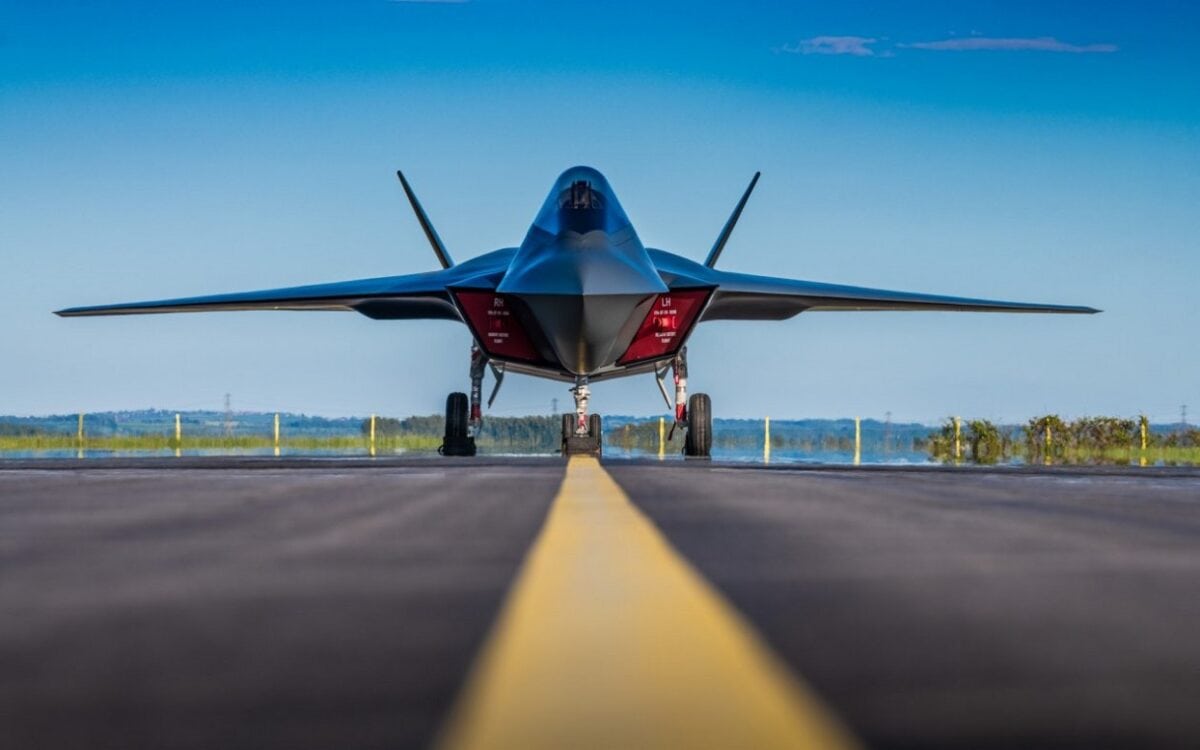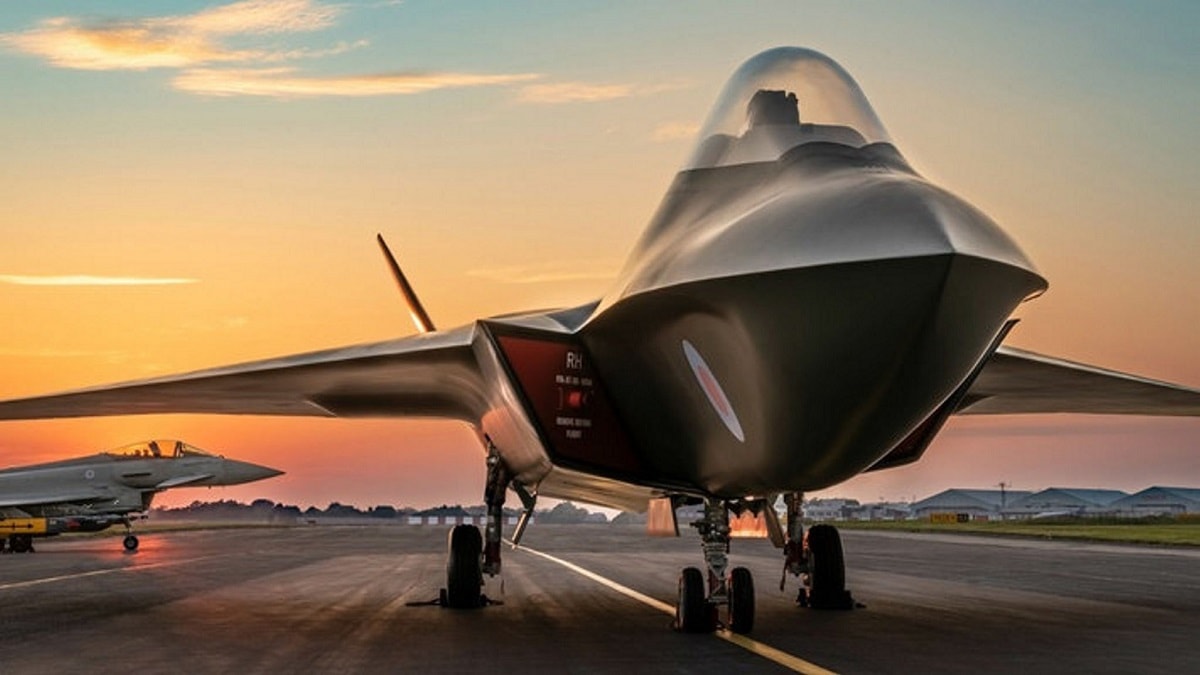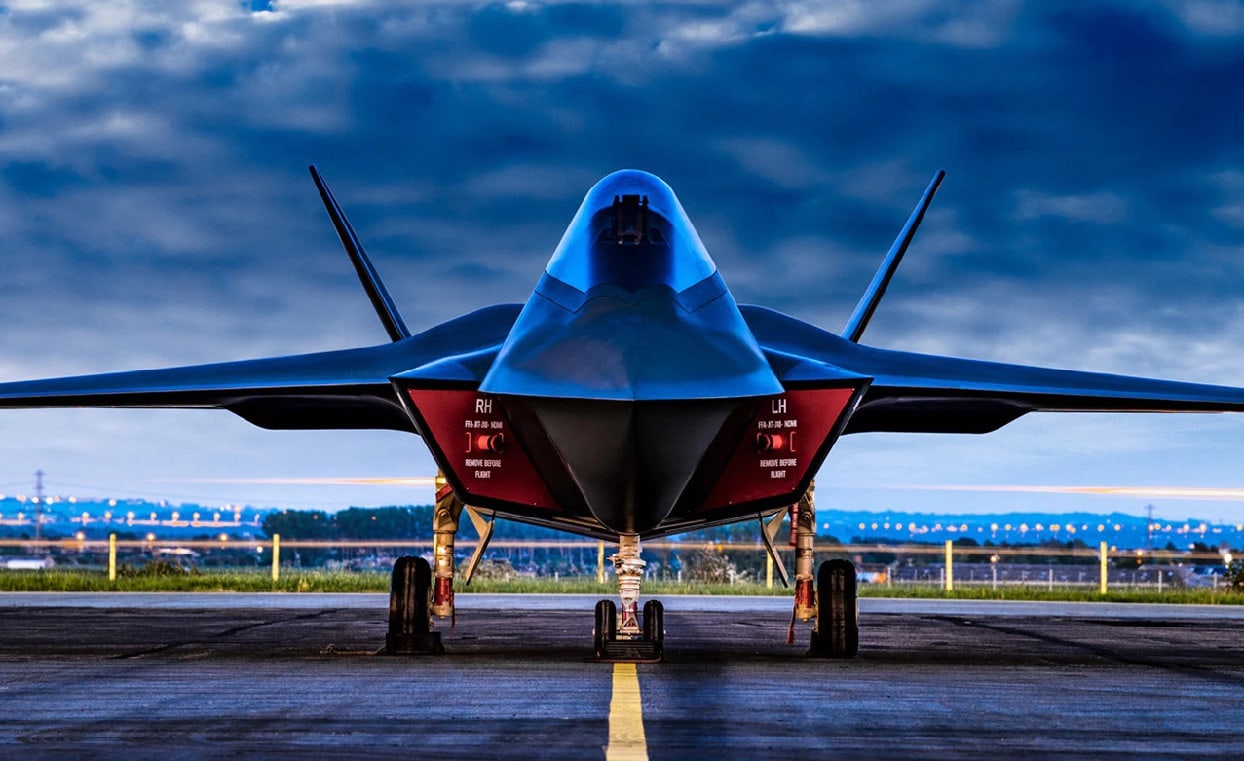Tempest 6th Generation Stealth Fighter Update: Earlier this month, Richard Thomas, editor for defense and transport at international analytics firm GlobalData, suggested that the UK may have to reconsider what assets it needs for the future given how the war in Ukraine is “tearing up” air domain doctrines.
That could include the Tempest program, the UK-led effort to develop a sixth-generation future combat aircraft that will gradually replace the aging Eurofighter Typhoon in the Royal Air Force’s air defense role, and which has a targeted entry into service by the mid-2030s.
Writing for Airforce-Technology, Thomas, who quoted Justin Bronk, a senior research fellow for airpower and technology at the Royal United Services Institute (RUSI), noted that the UK may not have the funds available for the development of such an advanced platform as the Tempest.
That would be due in part to the fact that it would not benefit from the number of potential international partners as the Typhoon – or perhaps the Lockheed Martin F-35, which has been adopted by allies and partners around the world.
Unveiled in 2018
The Tempest was first unveiled by the British Ministry of Defence four years ago in July 2018, and at the time the British government announced that it would spend £2bn to develop aircraft between then and 2025.
The program had been first initiated in 2015, but it wasn’t until three years later that the program was officially unveiled at the Farnborough International Air Show. A series of presentations at the recent Defence and Security Equipment International (DSEI) show in London highlighted the progress that has been made with the Tempest.
The program’s main partners, including BAE Systems, Leonardo, MBDA, Rolls-Royce and Saab, will be linked together to the wider supply chain by the vast open systems information and networking technology. This will enable the various teams to share design and development models. More than 2,000 workers at about 300 companies or institutions are currently engaged in the development of the aircraft.
Lofty Goals
Last year, the Tempest, which is part of the Future Air Combat System (FCAS) program entered the “concept and assessment phase,” with a contract worth approximately £250 million ($340 million) to lead contractor BAE Systems. The goal of the program has been to deliver a capable, flexible and affordable system by the mid-2030s, providing military, economic, and industrial benefits to the UK as well as its international program partners including Sweden, Italy, and Japan.

Image: Creative Commons

BAE Tempest. Image VIA BAE.
The Tempest program has set a goal to enter service in the mid-2030s, but it may not just be a race against the clock. The UK would like to see more international partners join the FCAS efforts, but currently, France, Germany and Spain are working on their own Future Combat Air System (FCAS). The main contractors of the “Euro-FCAS” reportedly consist of Airbus Defence and Space (Germany and Spain), and Dassault (France). MTU (Germany), Safran (France), and ITP (Spain) comprise the engine team.
These competing FCAST programs are now each working to develop a sixth-generation combat fighter that would have the potential to leapfrog the capabilities of the world’s most advanced combat aircraft including the F-35, F-22, J-20, and Su-57. Cost is certainly going to remain an issue for the UK and its partners.
Now a Senior Editor for 1945, Peter Suciu is a Michigan-based writer who has contributed to more than four dozen magazines, newspapers and websites. He regularly writes about military hardware, firearms history, cybersecurity and international affairs. Peter is also a Contributing Writer for Forbes.

